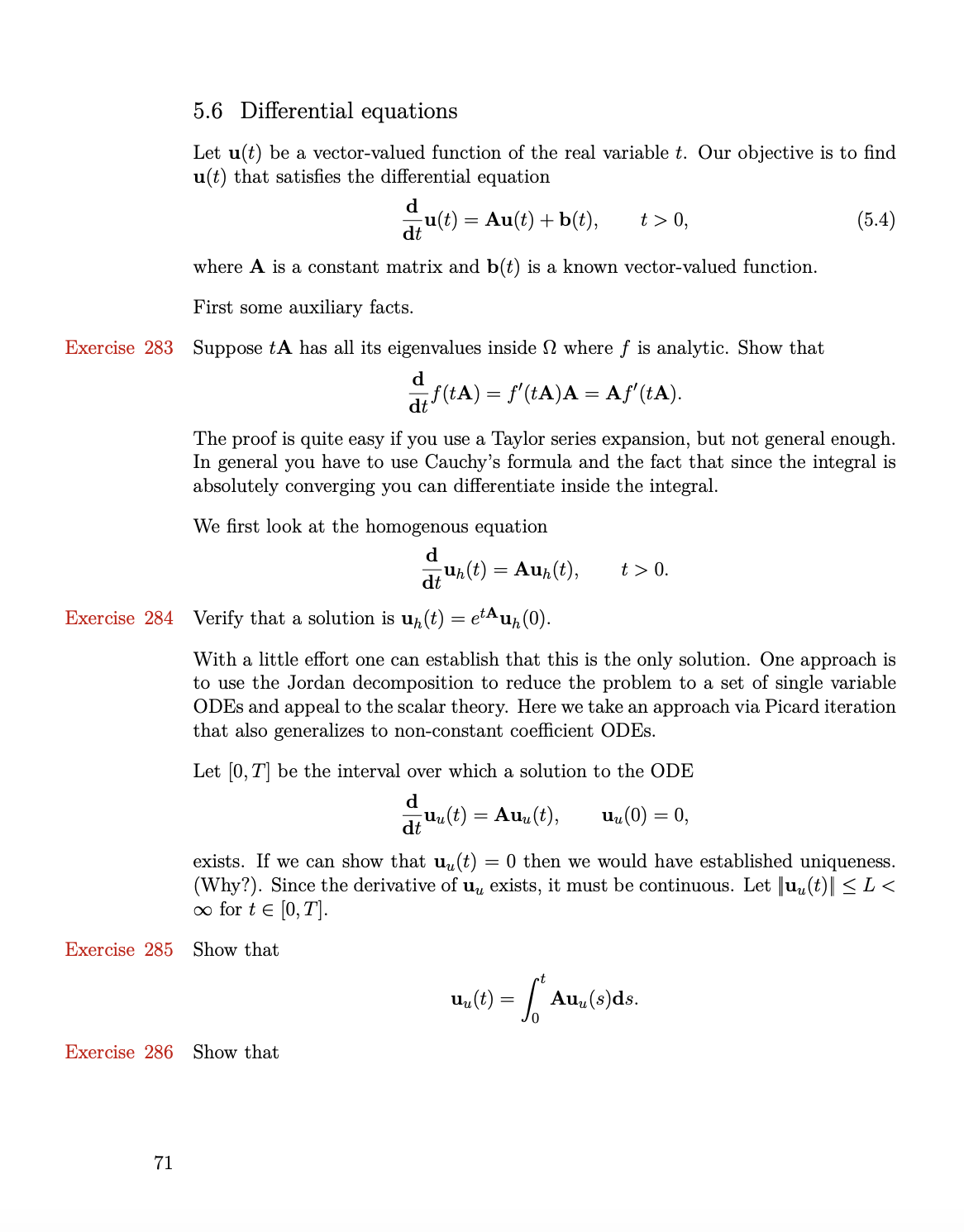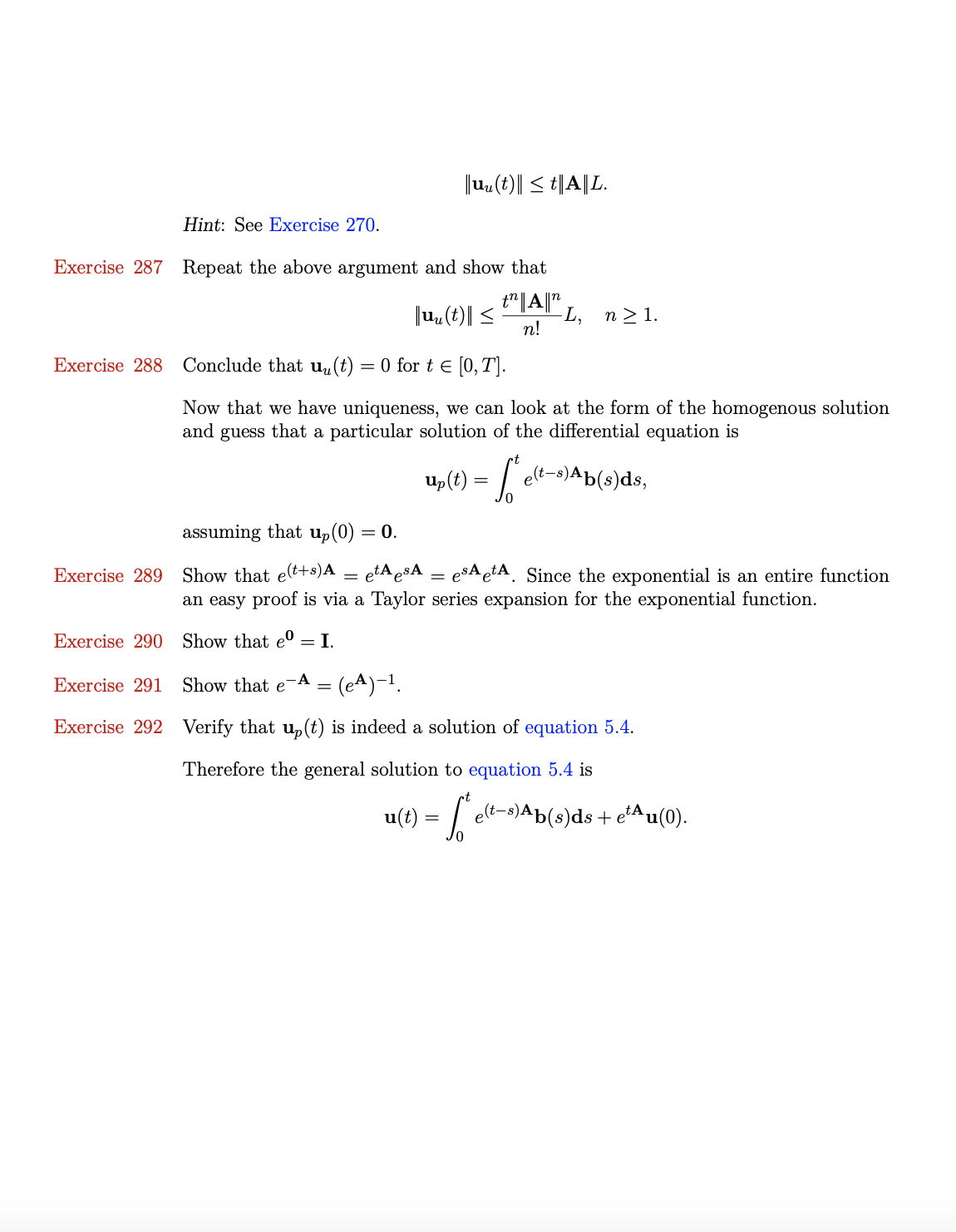Answered step by step
Verified Expert Solution
Question
1 Approved Answer
Could you please help with question 286 and 287? Thanks Exercise 283 Exercise 284 Exercise 285 Exercise 286 71 5.6 Differential equations Let u(t) be
Could you please help with question 286 and 287? Thanks


Step by Step Solution
There are 3 Steps involved in it
Step: 1

Get Instant Access to Expert-Tailored Solutions
See step-by-step solutions with expert insights and AI powered tools for academic success
Step: 2

Step: 3

Ace Your Homework with AI
Get the answers you need in no time with our AI-driven, step-by-step assistance
Get Started


